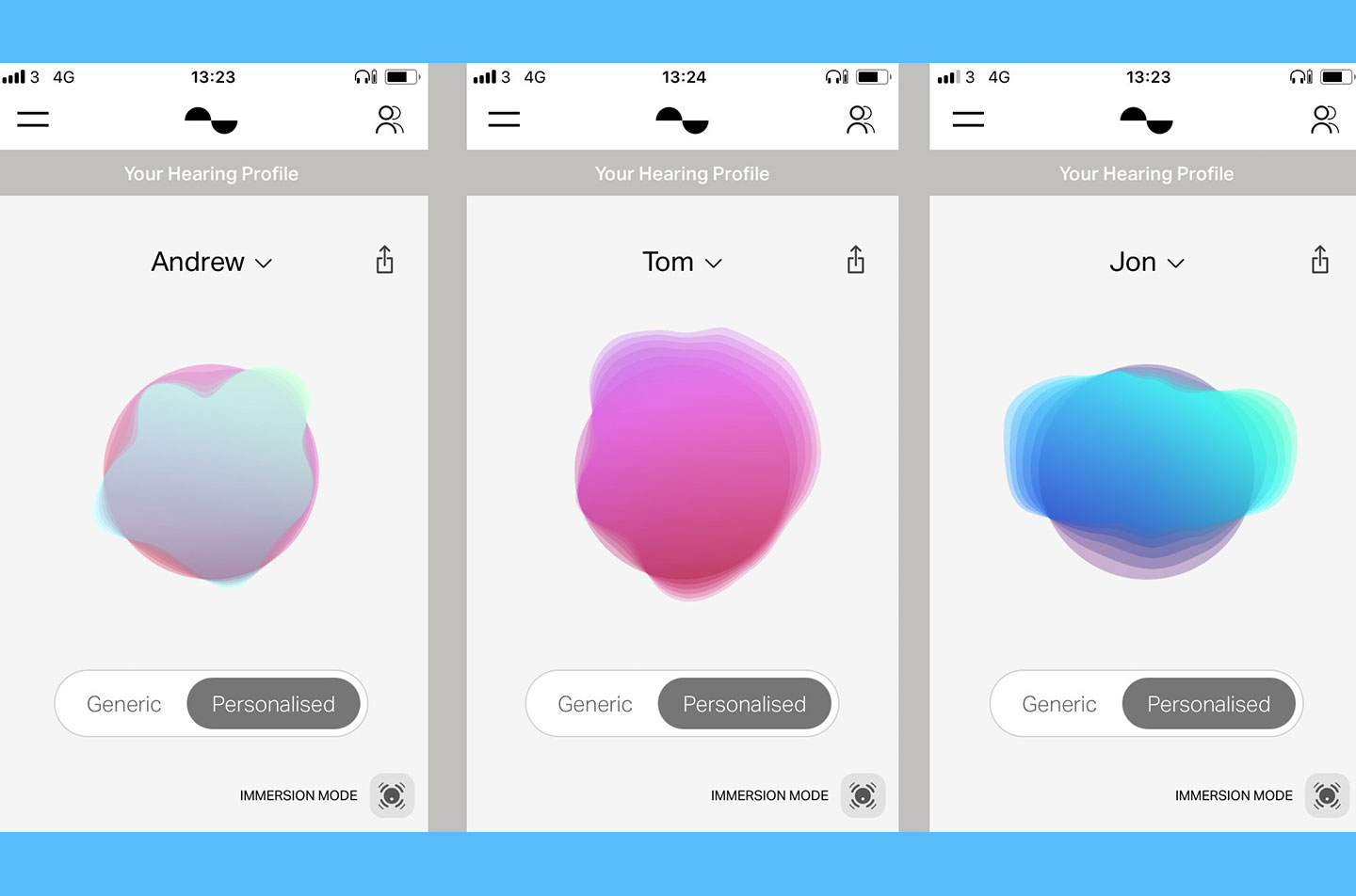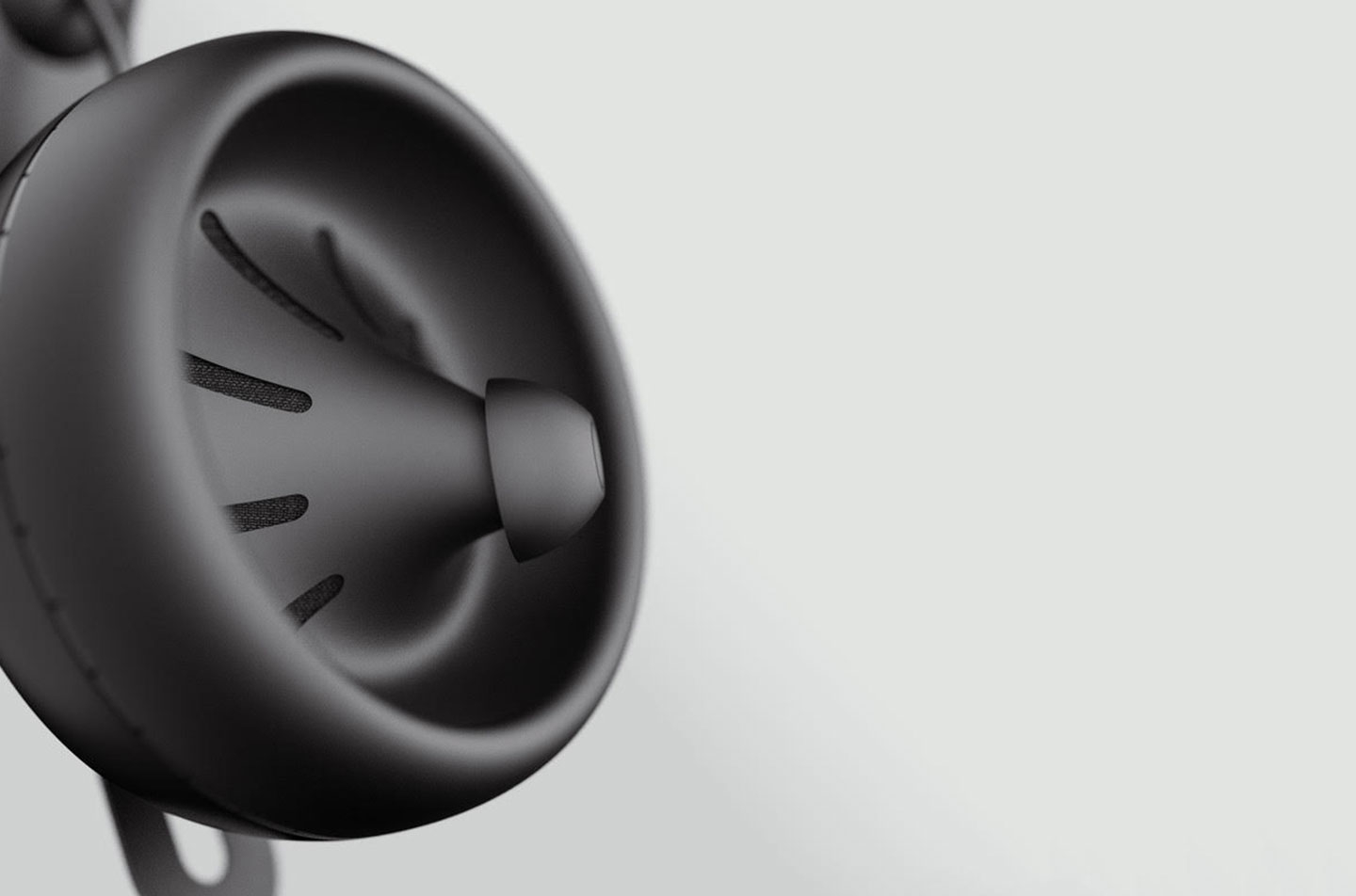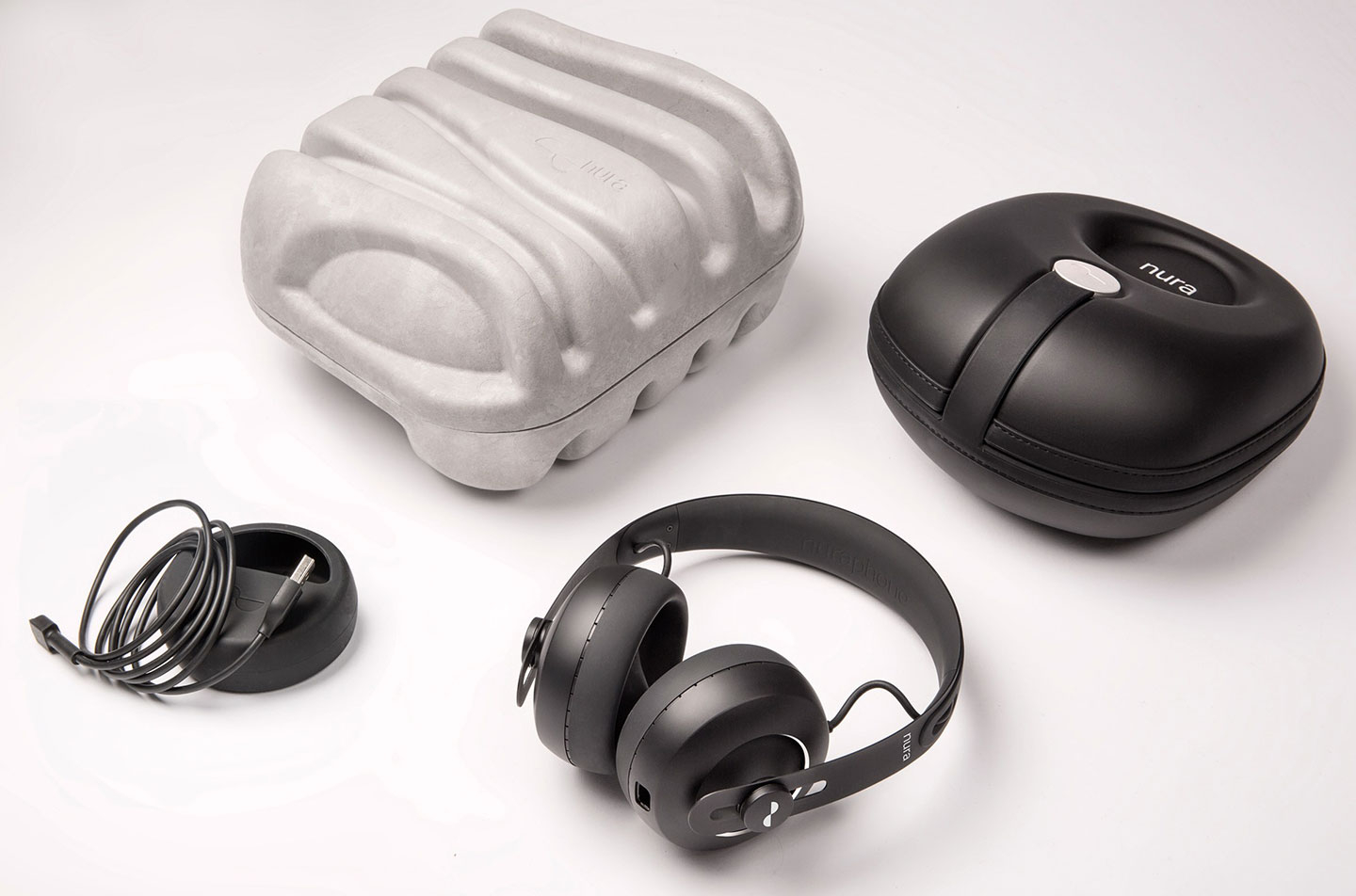- They've been called game-changing headphones, but is "perfect" hearing all its cracked up to be?
- The Nura Nuraphone has been widely marketed as a radical innovation in headphones. The praise they've elicited has been deafening, drawing breathless hyperbole almost across the board. When paired with a proprietary app, the Nuraphone allows you to hear music "perfectly." This is accomplished by measuring the user's hearing and using the resulting hearing profile to boost and attenuate certain frequencies to compensate for the imperfections inherent in human hearing. The underlying technology here is neither new nor magical—your hearing profile is determined through evoked otoacoustic emissions (EOAEs), a process first demonstrated in the late '70s. EOAEs are a sound generated from the ear itself in response to an external stimulus, such as a pure tone, click or burst. EOAEs were deeply explored by sound artists such as Maryanne Amacher and are commonly used today in ear screenings for small children.
On first use, the Nuraphone plays a range of tones into your ears and record the otoacoustic responses. The most difficult part of this process is simply getting the headphones correctly situated over your ears. The combination in-ear/over-ear design is a bit hard to get accustomed to and seemed to fit best on people without long hair. Once you've finished the examination, you're presented with your "unique hearing profile" in the form of a colourful blob. The blob represents your own ears' frequency response curves, where pitch is represented by the diameter of the main circle while sensitivity is represented by the bulges of the overlayed shape. If this sounds confusing, that's because it is. However, the data visualisation element of the Nuraphone app seems more oriented towards illustration of what the headphones are doing than presenting users with precise information.
Besides frequency compensation, the Nuraphone also offers an "immersion mode," which brings the strange in-ear/over-ear cup into play. Melodic content is played through the earbud while bass frequencies drive haptic feedback through the over-ear cup's contact with your skin. The degree of immersion can be adjusted in the Nura app on a scale ranging from "off" to "front row." The hearing profile customisation can also be completely turned off from within the app. The Nuraphone seems to cater primarily for Bluetooth, seeing as they come with a USB charging cable but no analogue audio cable. However, a number of other cables (iPhone, USB-C, audio etc.) can be purchased separately for €20-40 each.
As far as alternatives go, there doesn't seem to be much like the Nuraphone out there. Though I haven't tried them, the Even H2 Headphones are in the same ballpark and cost nearly half the price. Sonarworks True-Fi is another more affordable alternative, although much like Sonarworks Reference, True-Fi is oriented towards headphone transparency rather than adjusting the sound for a specific individual's ear. In fact, my biggest question about the Nuraphone continues to be: Who is it for? If the reviews are anything to go by, they seem universally loved. They look targeted towards a lifestyle/audiophile-oriented world rather than studio musicians, and I found they made familiar tracks sound somewhat alien in a way that took me a fair amount of getting used to.
Overall, my listening experience with the Nuraphone was strange, though not entirely unpleasant. Maybe I'm not used to hearing in "much sharper focus." Tracks I've heard played on all kinds of speakers and headphones sounded distinctively off. I was too put off by the prospect of making music with a new set of ears to even think about using the Nuraphone for production work. As the Nura app reminded me, my own hearing is far from perfect. However, it's also literally the only way I've ever heard sound, and I've grown pretty accustomed to them. I'm sure there are people who would love to hear with lab-like ears, but listening to music with objectively perfect hearing wasn't for me.
Ratings:
Cost: 3.3
Versatility: 4.1
Ease of use: 4.0
Sound: 3.6
 As far as alternatives go, there doesn't seem to be much like the Nuraphone out there. Though I haven't tried them, the Even H2 Headphones are in the same ballpark and cost nearly half the price. Sonarworks True-Fi is another more affordable alternative, although much like Sonarworks Reference, True-Fi is oriented towards headphone transparency rather than adjusting the sound for a specific individual's ear. In fact, my biggest question about the Nuraphone continues to be: Who is it for? If the reviews are anything to go by, they seem universally loved. They look targeted towards a lifestyle/audiophile-oriented world rather than studio musicians, and I found they made familiar tracks sound somewhat alien in a way that took me a fair amount of getting used to.
As far as alternatives go, there doesn't seem to be much like the Nuraphone out there. Though I haven't tried them, the Even H2 Headphones are in the same ballpark and cost nearly half the price. Sonarworks True-Fi is another more affordable alternative, although much like Sonarworks Reference, True-Fi is oriented towards headphone transparency rather than adjusting the sound for a specific individual's ear. In fact, my biggest question about the Nuraphone continues to be: Who is it for? If the reviews are anything to go by, they seem universally loved. They look targeted towards a lifestyle/audiophile-oriented world rather than studio musicians, and I found they made familiar tracks sound somewhat alien in a way that took me a fair amount of getting used to. Overall, my listening experience with the Nuraphone was strange, though not entirely unpleasant. Maybe I'm not used to hearing in "much sharper focus." Tracks I've heard played on all kinds of speakers and headphones sounded distinctively off. I was too put off by the prospect of making music with a new set of ears to even think about using the Nuraphone for production work. As the Nura app reminded me, my own hearing is far from perfect. However, it's also literally the only way I've ever heard sound, and I've grown pretty accustomed to them. I'm sure there are people who would love to hear with lab-like ears, but listening to music with objectively perfect hearing wasn't for me. Ratings: Cost: 3.3 Versatility: 4.1 Ease of use: 4.0 Sound: 3.6
Overall, my listening experience with the Nuraphone was strange, though not entirely unpleasant. Maybe I'm not used to hearing in "much sharper focus." Tracks I've heard played on all kinds of speakers and headphones sounded distinctively off. I was too put off by the prospect of making music with a new set of ears to even think about using the Nuraphone for production work. As the Nura app reminded me, my own hearing is far from perfect. However, it's also literally the only way I've ever heard sound, and I've grown pretty accustomed to them. I'm sure there are people who would love to hear with lab-like ears, but listening to music with objectively perfect hearing wasn't for me. Ratings: Cost: 3.3 Versatility: 4.1 Ease of use: 4.0 Sound: 3.6